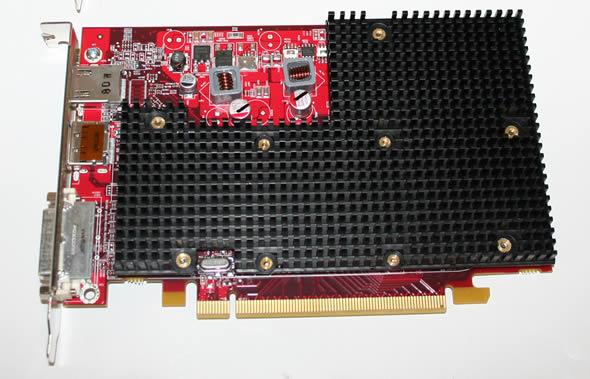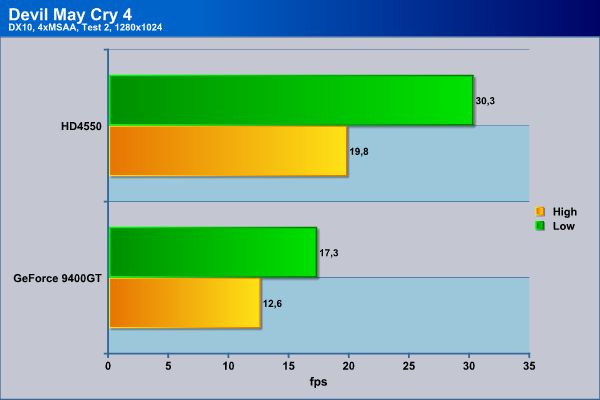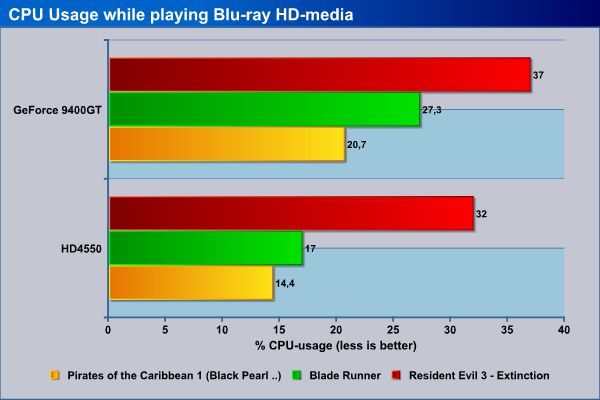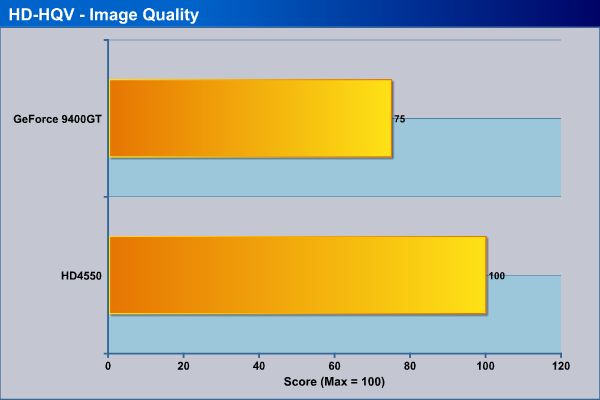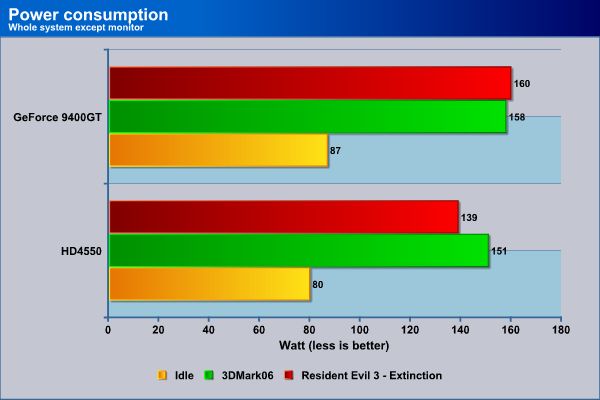For a lot of people paying more than $50-$60 for a video card is not an option. We have taken two cards from NVidia and AMD that won’t cost you more than $50 and pitted them against each other to see which company has made the best entry-level video card.
INTRODUCTION
How much are you ready to spend on a video card for your computer? Depending on what type of computer user you are the figure will be very different. Computer enthusiasts like most of us reading this site probably are prepared to put a few $100 on a good card, but for a lot of people, the idea of spending more than $50-$70 simply isn’t an option.
Today we are looking at two cards from AMD and NVidia that target this specific segment of the market. In the green corner we have the NVidia GeForce 9400GT, and in the red corner we have the AMD HD 4550. Both cards, on paper, offer all the features of their bigger brothers but as we all realize that there will have to be compromises somewhere at that price. Read on to find out what they are, which card comes up on top, and why even us enthusiasts would like to buy one of these cards.
ROUND 1: FEATURES AND SPECIFICATIONS
Both cards share a lot of the specifications and features of their bigger brothers.
|
Feature/Specification |
AMD HD 4550 |
GeForce 9400GT |
|
Memory
|
DDR3
|
DDR2
|
|
Engine Clock
|
600 MHz
|
550 MHz
|
|
Memory Interface
|
64 bit
|
128-bit
|
|
Processing Cores
|
80
|
32
|
|
Effective Memory Clock
|
1600 MHz
|
800 MHz
|
|
Fab process
|
55 nm
|
65 nm
|
|
Processing Cores
|
80
|
32
|
|
Max Board Power
|
20 W
|
50 W
|
It is quite obvious that the HD4550 has far better specifications than the GeForce 9400GT. The raw power is almost twice that of the GeForce 9400GT and we even get DDR3-memory (not to be confused with GDDR3 though) on the HD4550, while the GeForce 9400GT only comes with DDR2-memory.
Both cards have similar features so we’ll just list the ones worth mentioning for each card:
GeForce 9400GT
- Support for physics acceleration – As we will notice in 3Dmark Vantage, even the 9400GT can be used as a physics accelerator. This might help in future games.
HD4550
- 7.1-sound directly out from HDMI without any need for extra cables etc.
- DirectX 10.1; While AMD likes to talk about this a lot we do not really see this as a huge benefit at this time, especially on a low-end board like this.
- Less that 20W of power usage compared to the 50W power usage of the 9400GT.
Winner this round: The HD4550 wins this round hands down. For basically the same price you simply get a lot more power and features. At this moment we do not know how useful the physics acceleration will be so it is hard to put a value on that.
ROUND 2: GAMING
Even though neither of these cards is a powerhouse, we want to see how they fare in today’s games. The fact is that both NVidia and AMD are in some ways promoting these cards as decent gaming cards. This is what Nvidia says on their website:
“Realistic gaming for less
The GeForce 9400 GT GPU has a 2x performance increase over the comparable 8 series graphics card, allowing you to play the latest PC games without costing you a bundle. So now you can enjoy popular gaming titles the way they were meant to be played.”
So how do they play? We built up this little system below and tested both cards in a variety of games as well as 3DMark06 and 3DMark Vantage.
System:
• Phenom 8650 @ … GHz
• 2 GB DDR2 800 MHz memory
• Gigabyte … AMD 780G motherboard
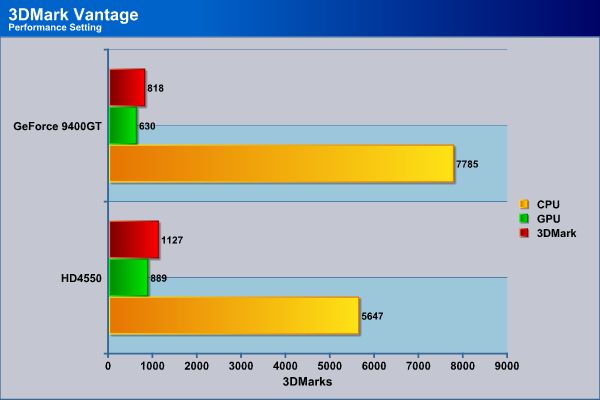
The HD4550 scores 40% better than the GeForce 9400GT although neither really should be proud of their results. It is interesting to see the CPU-score for the GeForce 9400GT as both are using the same AMD-CPU. I’m not sure that Futuremark yet has approved NVidia’s use of the GPU in the CPU-tests.
We see a similar pattern in 3DMark06. The GeForce9400GT just cannot keep up with the HD4550.
In our first game we chose to test the cards in quite high settings. The “High” setting also means it is using DX10 instead of DX9. Again, the HD4550 takes a 20-25% lead over the GeForce 9400GT.
In Devil May Cry 4 we chose to test the cards both with the “Low” setting and the “High” setting, together with 4xMSAA. The HD4550 completely crushes the GeForce9400GT and the game is even playable at the “Low” setting on the HD4550.
Winner this round: Again, the HD4550 wins a round without any opposition. It simply has much more power than the GeForce 9400GT. In reality though, you will be better off adding $20-30 for an HD4670 or a GeForce 9600GT if you are serious about gaming.
ROUND 3: MEDIA PLAYBACK
At the beginning I mentioned that there might be a reason why enthusiasts might be interested in these cards. Well, the reason is quite simple: on paper they both are excellent HTPC cards. They are both available in passive cooled versions and they both draw a small amount of power. But how good are they in off-loading the CPU when playing back HD media?
We took three Blu-ray movies and measured the CPU-load while we were playing a 2-minute segment for each movie with PowerDVD 7.3 Ultra (with all the latest patches).
- Blade Runner, Blu-ray, VC-1, 1:42–1:44 minutes
- Pirates of the Caribbean: Curse of the Black Pearl, Blu-ray, MPEG4-AVC, 0:12–0:14 minutes
- Resident Evil 3: Extinction
In Resident Evil 3 we turned on the Picture-in-Picture feature to see how the cards handle multiple HD-streams.
While both cards do a good job in offloading the CPU, the HD4550 has the upper hand in all three movies. Both cards struggle a bit when decoding two HD-streams, but again the HD4550 performs the best.
Winner this round: The HD4550 wins this round simply because it can offload the CPU better than the GeForce 9400GT.
ROUND 4: IMAGE QUALITY
Just as important as the CPU-offloading capability is the image quality of the picture you get. We used the excellent HD-HQV-program to see how good these cards are when displaying HD-video. This disc (we got the HD-DVD version but it is also available on Blu-ray) let’s you test the video card in a series of situations and then rate the output. The final score is then calculated as a sum of each individual score where the maximum is a score of 100.
The HD4550 manages to score a perfect 100, something we were quite impressed with. The GeForce 9400GT manages a very respectable 75, meaning it still works very well as a HTPC video card.
Winner this round: Again the HD4550 takes a round. The GeForce 9400GT is not far behind though.
ROUND 5: POWER CONSUMPTION
As both of these cards quite possibly will find their way into HTPC’s or entry level home-PC’s, a low power consumption is important for these types of cards. We measured the total systems power consumption (except monitor) at the wall at three different situations: Idle, while watching a Blu-ray movie and while stressing the video card with 3DMark06.
The difference in power usage is not that big between the two cards. The HD4550 has a slightly lower power consumption in idle mode as well as when running 3DMark06, but it performs much better when watching Resident Evil 3 with its dual HD-stream.
Winner this round: This is getting a bit repetetive, but the HD4550 again narrowly wins a round. The difference is pretty small though, and neither card is a power-hog.
CONCLUSION
There is no doubt which $50 card offers the most features and performance when comparing the HD4550 and GeForce 9400GT. The HD4550 is a really nice little card that would fit very well in an HTPC or a low-power PC. The gaming performance isn’t stunning, even though it easily beats the GeForce 9400GT, and users that plan on doing anything more than casual gaming should invest in one of the slightly more expensive cards from either AMD (HD4650 or HD4670) or NVidia (GeForce 9600GT).
The GeForce 9400GT isn’t a bad card for its price but simply does not offer anything special over the HD4550 except for the PhysX support. It will work in an HTPC, but the lack of 7.1-sound over HDMI is a big negative in our mind.
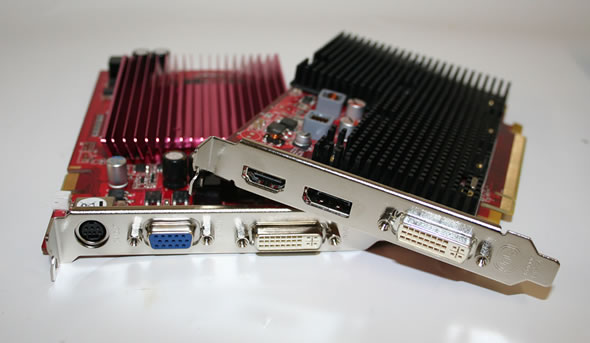
 Bjorn3D.com Bjorn3d.com – Satisfying Your Daily Tech Cravings Since 1996
Bjorn3D.com Bjorn3d.com – Satisfying Your Daily Tech Cravings Since 1996

